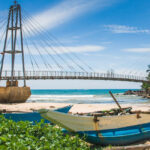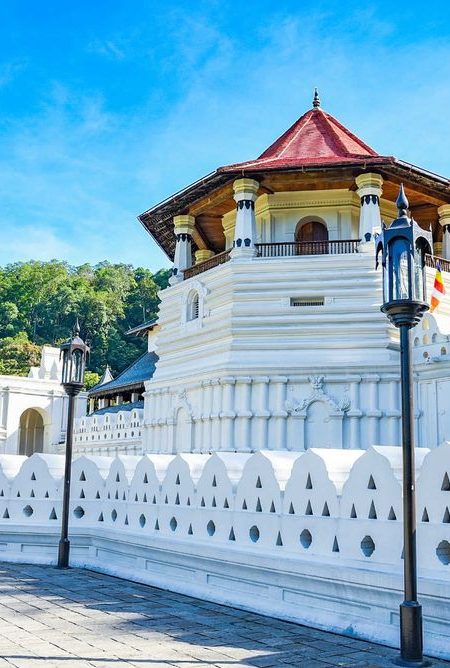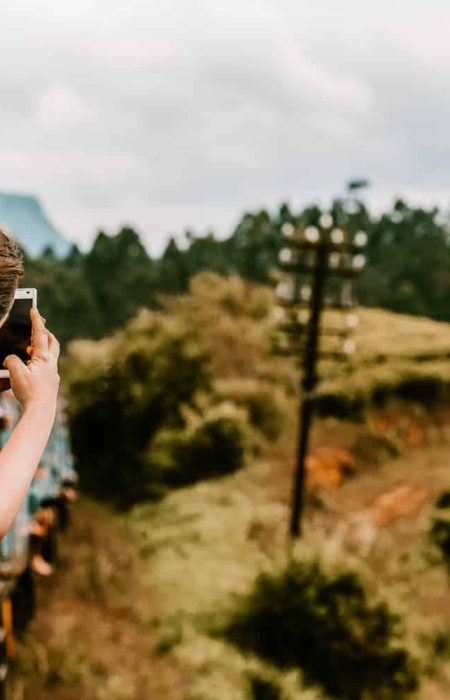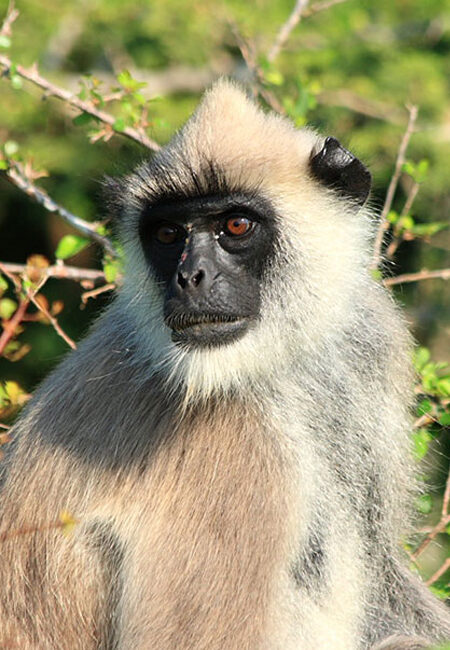
Day 1: Anuradhapuwa, The great Stupa of Ruwanwelisaya
Introduction
Famous for its well preserved ruins of an ancient Sinhala civilization, Anuradhapura (Anuradhapura) is one of Sri Lanka’s old capitals, with a remarkable archaeological site. One of many treasures within the country’s rich historical and religious heritage is Ruwanwelisaya, arguably its finest example. Built in 2nd century BC AD by this majestic stupa, King Dutugemunnu has been a testimony to architectural semantic perfection and spiritual significance of ancient Sri Lanka.
Historical Significance
One of the Solosmasthana, the 16 sacred sites in Sri Lanka, is the Ruwanwelisaya, or Mahathupa (the Great Stupa). An important Buddhist shrine in the world, it was constructed to enshrine the relics of Lord Buddha. But stupa is not only a place of worship but a symbol of unification of Sri Lanka under King Dutugemunu who defeated South Indian invader, King Elara.
Architectural Marvel
It is 290 meters in the circumference and 103 meters in the height. Under the sun, its bell shape gleams while its carvings and a beautiful white dome shine over sun completely, a serene and awe inspiring sight indeed. Surrounded by a platform called Salapatala Maluwa decorated with stone carvings of different animal figures and mythical creatures – all of which are of the best workmanship and design of ancient Sri Lankan craftsmen.
Spiritual Experience
Visiting Ruwanwelisaya is really spiritual experience. Here pilgrims from all over the world pay homage and meditate and seek blessings. In the air, incense fills the atmosphere, the chanting of devotees ding the hear and the sight of devotee’s in white, offering flowers and prayers. As mediators are intended, the stupa’s surrounding is serene enough for mediation and contemplation so that they can associate with their inner selves and can be a peaceful and tranquil place.
Practical Information
Location: The sacred city area of Anuradhapura surrounds Ruwanwelisaya which is central to the city.
Visiting Hours: Visitors are free to visit the stupa from early morning till late evening. While the best time to visit is when the weather’s cooler (early morning or late afternoon), that doesn’t mean there isn’t a beautiful view in the blistering sun at any time of day.
Dress Code: Visitors are expected to dress modestly as a sacred site. White or very light clothes, covering the shoulders and the knees is better to wear.
Entry Fee: Unfortunately it charges no entry fee, but it does welcome donations which enable the site maintenance.
Travel Tips
Guided Tours: Don’t be afraid to hire a local guide who can tell you about the historical and significance significance of the stupa.
Photography: Photography is permitted, but it is best to be respectful of those who are worshipping, and not take photos of people who are worshipping.
Hydration: Make sure to carry a water with you as the area can get very hot, even going there during the day.

Day 2: The Sacred Bo Tree — Sri Maha Bodhi
Introduction
On day 2 of the Anuradhapura tour, we visit the very revered site for Buddhist pilgrims – the Sri Maha Bodhi. He explained that this ancient tree is a living symbol of enlightenment, but also spiritual legacy, which defies what one would call mere botanical wonder. It is the southern branch from the historic Bodhi Tree under which Lord Buddha attained enlightenment at Bodh Gaya, India, planted in 288 BC.
Historical Significance
During the reign of King Devanampiyatissa Princess Sangamitta, daughter of Emperor Ashoka, brought to Sri Lanka the Sri Maha Bodhi. The most sacred relics of the Buddhist faith and considered the oldest human planted tree in the world with a known planting date. At over two millennia, this is a cornerstone of Sri Lankan religious history and the site has been continuously a place of worship and prayer.
Sacred Grounds
There are ancient ruins and statues dotting the area around the Sri Maha Bodhi, near the road, telling its long and venerated past. This ancient Bodhi Tree is surrounded by railings and protected by golden pillars to support its ancient branches. Offering prayers, lighting oil lamps and placing flowers at the base of the tree is what devotees come to the site for. The sound of sibilant prayers, and the rustling of Bodhi Tree leaves produces a most peaceful ambience.
Spiritual Experience
Sri Maha Bodhi is a very spiritual place for all Buddhists in the world. However, the pilgrims believe that the Bodhi Tree blesses one when one prays and meditates under it. The full moon (poya) days are especially crowded at the site when devotees come in great numbers both for performing rituals and communal worship.
Practical Information
Location: The Sri Maha Bodhi is located in Mahamewna gardens, in Anuradhapura.
Visiting Hours: The site operates from 7:00 AM to 6:00 PM. Early morning visits will be more tranquil.
Dress Code: Dress modestly—shoulders and knees covered, if you visit. White attire is preferred.
Entry Fee: There is no entry fee but donation to help the maintenance of the site are appreciated.
Travel Tips
Timing Your Visit: Visit the gate early in the day or late afternoon to miss the midday heat.
Guided Tours: There’s history to the Bodhi Tree too, and a knowledgeable guide can teach you that too.
Respect the Sanctity: Restrain yourself from being loud and disrespectful, it is a place of worship. Don’t touch the tree or the offering of the other devotees.

Day 3: Named as the Jetavanaramaya , this majestic monastic complex was once very enjoyable to everyone.
Introduction
The highlight on the third day is the third largest stupa in the world, Jetavanaramaya. Built in the 3rd century, by King Mahasena, this architectural and engineering marvel of early Sri Lankan history is a product of the genius of an ancient race. Once the centerpiece of a huge monastic complex, it continues today to symbolize the island’s rich religious heritage.
Historical Significance
It was built where Indian monk Mahinda, who had introduced Buddhism in Sri Lanka, met the king Devanampiyatissa. An important relic site, the stupa was built to house part of a belt tied by the Buddha. Jetavanaramaya was the third tallest ancient structure of its time, just behind the Egyptian pyramids at its peak.
Architectural Marvel
Jetavanaramaya once the tallest stupa in the world stands at 122 meters. We see the construction on a massive scale; its massive brick structure contains millions of bricks. A crystal sits on top of the stupa dome, reflecting the suns light and is a magnificent place to stand. Ruins of the monasteries, meditation halls and inscriptions around the stupa paint a picture of monastic life of the ancient times.
Spiritual Experience
Jetavanaramaya is not only the marvel of ancient engineering but also centre of spiritual activity. Here pilgrims come to meditate and to light their oil lamps and to offer flowers. The well oversized grounds provide a peaceful environment for contempleation and reflection. The stupa is a symbol of a Buddhist doctrine of impermanence and of pursuing enlightenment.
Practical Information
Location: Situated in the center of the ancient city of Anuradhapura is Jetavanaramaya.
Visiting Hours: The site is open from 7:00 AM to 6:00 PM. Early in the morning or late in the afternoon is best.
Dress Code: Like other sacred sites modest dress is required. It’s better to wear white or light colored clothing.
Entry Fee: The entry fee is not fixed but if you like you can put donation for maintaining the site.
Travel Tips
Exploring the Grounds: There’s such a wealth of surrounding ruins to explore that it’s worth taking your time, since they give a fascinating insight into the ancient life of monasticism there.
Guided Tours: Although it has no good references, it is worth considering hiring a guide to find out about Jetavanaramaya from a historical and architectural point of view.
Photography: Photos are permitted, but do not disturb worshippers.

Day 4: This is Abhayagiri Monastery, an Ancient Monastic City.
Introduction
On the fourth day of our Anuradhapura tour we visit Abhayagiri Monastery, an ancient monastic complex that was, at one time, one of the greatest and most influential centers of Theravada Buddhism. A repository of historical and archaeological importance is Abhayagiri, established in BC 1st century.
Historical Significance
After his return from exile, former King Valagamba established the Abhayagiri Monastery. Theravada and Mahayana Buddhism thrived at the monastery and the community it served harbored thousands of monks. Its learning and scholarship made Abhayagiri famous which brought monks and scholars from all across Asia into its precincts.
Architectural Marvel
The centerpiece of the complex is one of the largest Stupas in Sri Lanka, the Abhayagiri stupa. At 75 metres the stupa is an impressive example of ancient Sri Lankan architecture. Other structures at the monastery complex, including many ruins of residential quarters, meditation halls, and other structures, give some indication of the monks former daily lives.
Spiritual Experience
Abhayagiri Monastery is an ideal place for doing meditation and thinking. Ancient ruins can be walked through by the pilgrims and the visitors. Its peacefulness alongside the historical importance of the place make this a profoundly spiritual place.
Practical Information
Location: The Abhayagiri Monastery is situated to the north of Anuradhapura.
Visiting Hours: The site is open from 7:00 AM to 6:00 PM. The best time is early morning or late afternoon.
Dress Code: Clothing needs to be modest, white or light colored attire preferred.
Entry Fee: Donations are welcomed although there is no fixed entry fee.
Travel Tips
Exploring the Ruins: And there is lots to see there – take your time to explore the extensive ruins and get a fascinating insight into ancient monastic life.
Guided Tours: If you have a knowledgeable guide, he or she will be able to tell you all about the Abhayagiri Monastery; its history and importance.
Respect the Site: Show respect and keep your hands, and the ancient structures, to yourself.

Day 5: Thuparamaya is the Oldest Stupa in Sri Lanka.
Introduction
On the last day of your tour, Thuparamaya, the oldest stupa in Sri Lanka, is what you see. Sri Pada or Sripada is perhaps the most sacred site in the island constructed in the 3rd century BC by King Devanampiyatissa, where a collarbone relic of Lord Buddha enshrines.
Historical Significance
The introduction of Buddhism in Sri Lanka first stupa to be constructed was Thuparamaya. Mahinda Thera, the Indian monk who brought Buddhism to the island, advised the building of it. The stupa has been renovated over and over again but still retains its role in symbolising Sri Lanka’s Buddhist heritage.
Architectural Marvel
The original structure of Thuparamaya formed the shape of a bell in shape, which has been the format the construction of many other stupas in Sri Lanka. However, the current structure is largely antique with a beautiful dagoba encircled by a circular platform. It also has ancient pillars, remains of the original vatadage, the original circular relic house and other ruins that increase its historical charm.
Spiritual Experience
As a pilgrimage for Buddhists Thuparamaya is a considerable place. Visitors to the stupa pray, meditate and join religious ceremonies. Visitors enjoy a trance inducing ambient and the sanctity of the relic residing in the stupa.
Practical Information
Location: Anuradhapura Thuparamaya lies in the sacred city area.
Visiting Hours: The site remains open from 7:00 AM to 6:00 PM. It’s recommended to come in the early morning or late afternoon.
Dress Code: Visitors should dress simply, and in white or very light colors.
Entry Fee: There is no fixed entry fee, but a donation towards the upkeep of the site will be appreciated.
Travel Tips
Exploring the Site: The ruins provide a great insight into Sri Lanka’s past architectural style and you should take your time to explore the area and the ruins themselves.
Guided Tours: Thuparamaya also has a guide who could give the history and historic importance of the place.
Respect the Sanctity: Be quiet, respectful and keep a respectful distance from the ancient structures, and don’t touch them.













